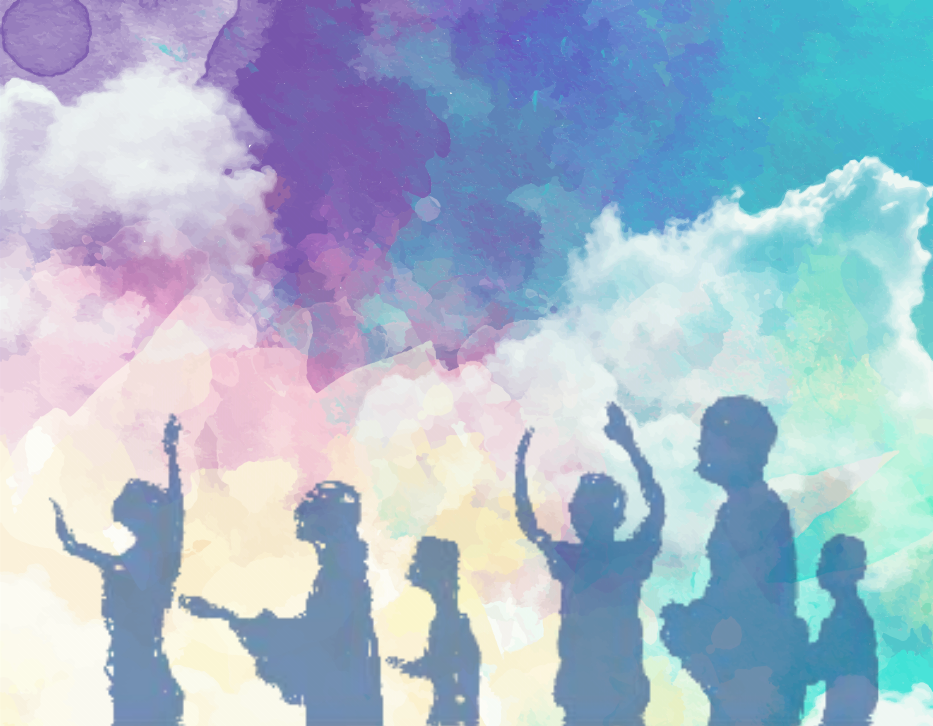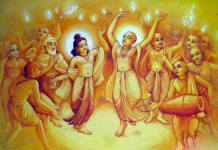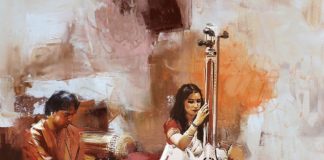Baba Nam Kevalam. Three Sanskrit words that became the sound of the beating heart of Ananda Marga. Sung in countless melodies. In all the continents of the world. In individual practices before meditation. In local dharmacakras. In small and large retreats, with tens to thousands of people repeating them in unison. In the sound of a CD, online radio, a music app, playing on your phone, in the car, at work, at home.
How many devotees recount that they joined Ananda Marga because they felt an irresistible attraction to the sound of Baba nam kevalam? Kiirtan, which means “to sing the name of God out loud”? How many devotees say that one of the great tools – in some cases, the main tool – for them to sustain their practice is to listen, sing, play kiirtan? How many devotees run eagerly to the hall or a circle under a tree where someone is playing and singing? How many do not record, share, ask, create new melodies, as one who hunts for a treasure trove of incalculable wealth?
Kiiran is certainly a powerful pracar tool. And so, the Dharma for all Journal begins, in this edition, its new section: #kiirtanforall. In it, we will share with you:
- The story of kiirtan: how it came to be, what it means and its great landmarks.
- Profiles of composers and kiirtan players, with music and videos.
- Devotional stories related to listening, playing and singing kiirtan.
And other topics, suggested by you, the readers.
Let us begin, then, with how it all came about. How was kiirtan born?
Kiirtan, as a practice, is older than Ananda Marga. It was popularized by the Indian saint Chaetanya in the 16th century, who brought to the world the popular “Hare Krishna Hare Rama“. Baba nam kevalam kiirtan came about 15 years after Baba founded Ananda Marga.
Until the year 1970 devotees sang bhajans (devotional songs) for Baba, composed by them or borrowed from other spiritual paths. On October 8, however, a peculiar event took place, as reported by the Acarya Ishvarakrsnananda Avadhuta, in testimony collected by Devashish (Donald Acosta, of Puerto Rico):
“After many years, I went to Daltonganj in the year 2007 and met some old friends, margiis who were present when Baba nam kevalam was introduced. They told me that in the first place, Baba asked everyone present to listen.
In the beginning they heard music coming from the atmosphere, the beautiful sound of an instrument playing. Baba said, ‘Listen closely to what they are singing.’ They said, ‘it is something like Baba.’ ‘Listen even more closely.’ ‘It’s Baba nam’. ‘Listen with even more attention.’ They said, ‘It’s something like Baba nam kevalam.’ Baba said, ‘Yes, you are right. This is the mahamantra. Now go and sing and dance.’
The people then started singing and dancing. Suddenly, Baba’s son, Gaotam, shouted, ‘Baba’s car is moving!’ Baba said that was the effect of kiirtan. Even lifeless things can move with the power of kiirtan. Anyway, they stopped the car.
I visited this holy place in 2007. It is known as Amjharia. My two margii friends, Jaganath and Bajnath, took me there along with the Acarya Prajinananda Avadhuta. I was very happy to see this place. Now they are doing kiirtan there every month and distributing food to the poor and running a school for the poor.”
Did you know this story? Do you know others? Write to journal@d4all.org.
In the next edition, you will learn of the various translations and ideations associated with Baba nam kevalam.







